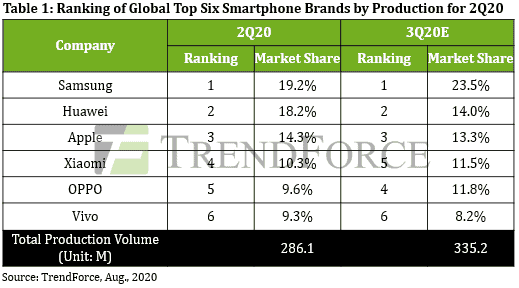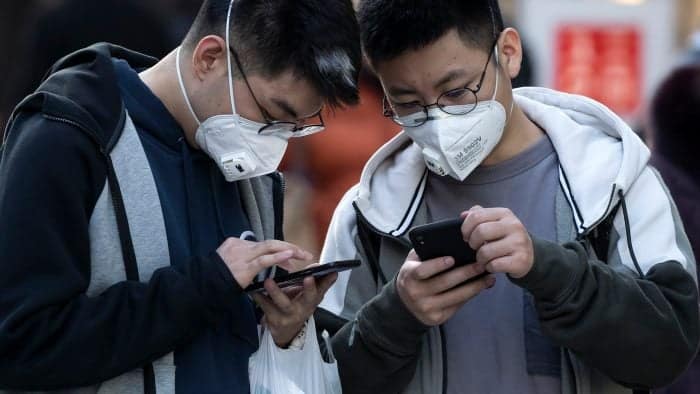The COVID-19 pandemic has forced governments around the world to close borders and impose regional lockdowns, resulting in a significant decline in GDP. The slowdown in economic and social activity has had a significant impact, in particular on the smartphone market. TrendForce estimates that 286 million of these devices were manufactured in the second quarter, up 2.2% from the previous quarter, but 16.7% less on an annualized basis, the largest drop in industry history.
Smartphone production records the largest year-on-year decline of 16.7% in the second quarter of 2020
Analysts expect the relaxation of restrictive measures and economic stimulus policies to create consumer demand by some governments will help support the recovery of the smartphone market in the second half of the year. The volume of production in the current quarter is expected to reach 335 million units. This figure is 10.1% lower on an annualized basis, but is in line with a 17.2% increase over the previous quarter.

According to the results of the last quarter, Samsung holds 19.2% of the market. The share of Huawei is 18.2%. Apple is in third place with 14.3%. This is followed by Xiaomi, Oppo and Vivo, whose shares are equal to 10.3%, 9.6% and 9.3%, respectively. The projected distribution of the market among the main participants for the current quarter looks like this: Samsung – 23.5%, Huawei – 14.0%, Apple – 13.3%, Oppo – 11.8%, Xiaomi – 11.5%, Vivo – 8.2%.
Counterpoint: Smartphone sales in Europe declined 24% YoY in Q2 due to COVID-19

With many companies publishing their results during the second quarter of 2020, Counterpoint Research couldn’t be out of the part. According to the market research company. The European market of smartphones saw a significant decline of 24% from the same period last year in Q2 2020. Moreover, the report reveals a 22% quarter-on-quarter decline in the same period. Of course, it’s easy to understand, since COVID-19 is still here and there affecting our lives. It certainly affected the demand for smartphones in several ways. According to the report, Eastern Europe had shown somewhat an immunity to the pandemic. However, in the second quarter of 2020, we could see a decline of 24% YoY.
The lockdown measures imposed by some countries in Europe managed to flatten the curve of COVID-19. However, at the same time, it slowed the smartphone market growth. It could be even worse if it weren’t the e-commerce channels open to keep the smartphone market from flourishing. Even markets that faced an intense lockdown like Italy and Spain managed to sell smartphones thanks to the online retailers. With the easing of the lockdown, restrictions over offline businesses were lifted. This quickly increased the number of smartphones sold in the region.




